News //
In January 1819, the ‘Indiana’ dropped anchor in Singapore, and Sir Stamford Raffles stepped ashore.
Many Singaporeans have heard the story of Raffles’ founding, with William Farquhar, of a British settlement in Singapore. What is perhaps less known is that his expedition was also accompanied by two French naturalists, Pierre Médard Diard and Alfred Duvaucel.
Diard and Duvaucel were avid travellers, collectors and researchers of natural history. They spent much of their lives in South and Southeast Asia, sent thousands of specimens back to Paris, and introduced the western world to numerous species that were previously unknown to France, England and the Netherlands.
Their journey to Singapore marked the beginning of an eventful century of French interest in Singapore’s biodiversity. As described in the Lee Kong Chian Natural History Museum’s (LKCNHM) ongoing exhibition ‘200: a natural history’, this period saw a flurry of expeditions and arrivals of sailors, travellers, traders, colonists, botanists and zoologists. They visited, collected material and made observations, forming a large body of natural history knowledge that continues to be used to this day.
After the World Wars, France and Singapore re-established and expanded research links between the two countries. The relationship has culminated in today’s close collaborations between what is now the Muséum national d’Histoire naturelle (MNHN), in Paris, and Singapore’s LKCNHM.
This is the story that is told in LKCNHM’s recent publication, ‘Voyageurs, Explorateurs et Scientifiques: The French and Natural History in Singapore’.
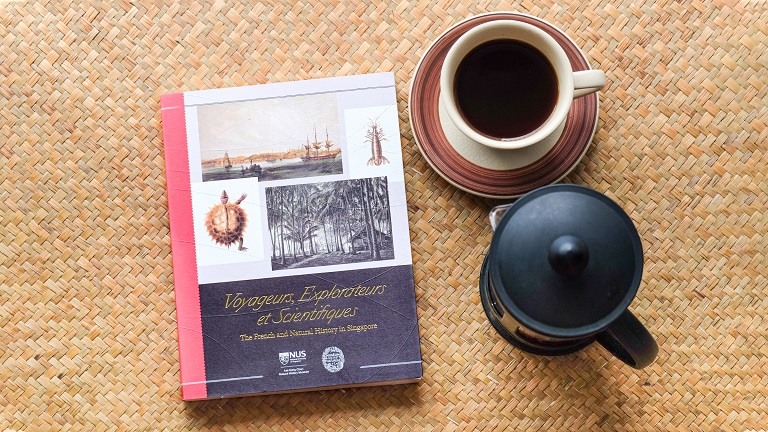
In the second e-book launch of recent months, LKCNHM is making the digital version of this print book freely available to the public! The full book can be downloaded for non-commercial purposes from https://lkcnhm.nus.edu.sg/publications/books-by-the-museum/voyageurs-explorateurs-et-scientifiques/
‘Voyageurs, Explorateurs et Scientifiques’ began life when LKCNHM was invited by the Embassy of France in Singapore to be a partner of ‘Voilah! France Singapore Festival 2019’. Months later on 8 November last year, brightly-coloured drawings of animals by Diard and Duvaucel were projected onto building facades along Armenian Street, and the naturalists’ legacies were detailed in the first chapter of this book, which was launched on the same day.
The subsequent chapters are a treasure trove of tales of other intrepid French explorers who visited Singapore, accounts of their discoveries, jet-setting specimens and more.
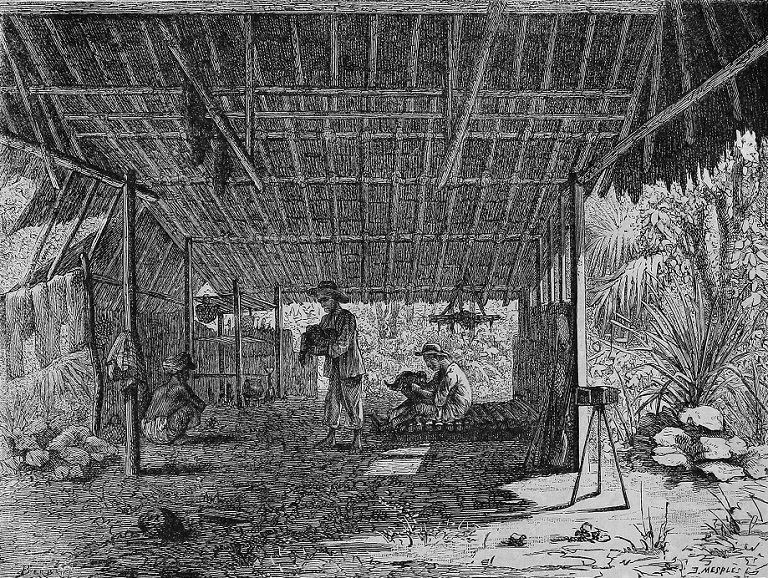
Achille Raffray’s workspace for preparing specimens and making photographs during his travels in New Guinea. Source: Biodiversity Heritage Library.
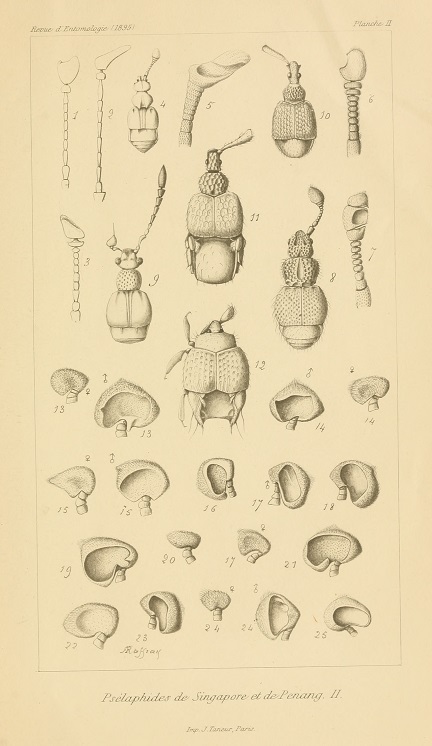
One such intrepid explorer was Achille Raffray, a French diplomat and Consul in Singapore who had a passion for beetles. He collected many specimens from areas such as Serangoon, Botanic Gardens, Bukit Timah, and Seletar, and described a whopping 83 new species from Singapore.
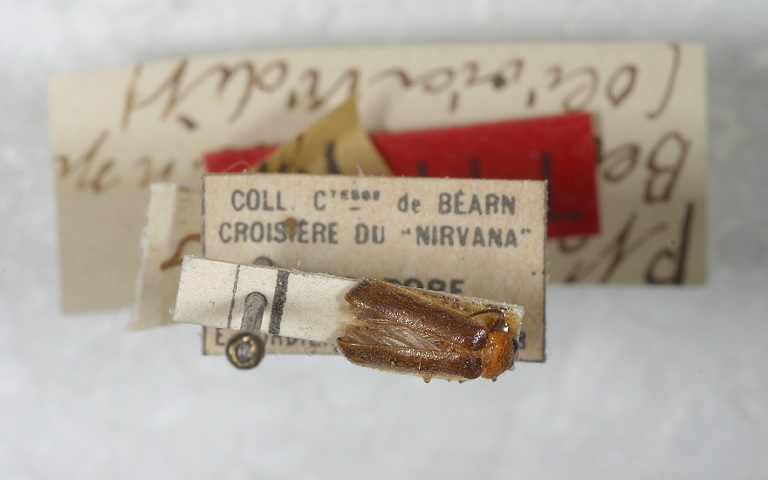
A native Singapore firefly, Pteroptyx bearni, was described by French entomologist and botanist Joseph Ernest Olivier. His type (representative) specimen, collected in 1908 and presently housed in MNHN, is now 112 years old! This species of firefly has not been sighted in Singapore for a long time, making this particular specimen an even more valuable one.

Instead of a common critter caught while dashing around the shorelines, the first crab from Singapore ever to have been described was a little pea crab found tucked inside a large mollusc commonly known as a pen shell, collected in 1839 by French research vessels. After much sleuthing and elbow grease, the mystery of its identity has finally been solved in this book, putting an end to 180 years of confusion.
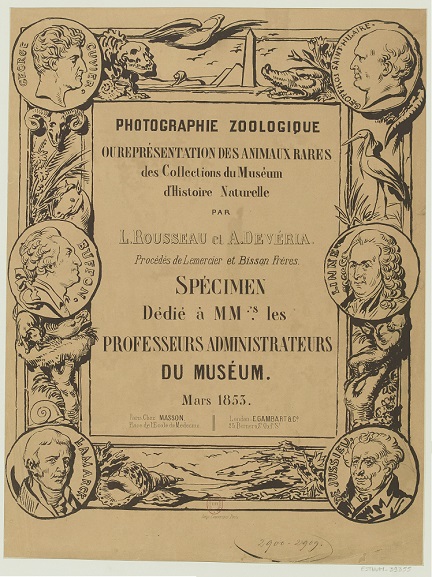
In another first, the earliest known photograph of a natural history specimen from Singapore was presented in a French publication from the 1850s. This publication was, in turn, outstanding for being the earliest known scientific work to have been illustrated with photographs. What was the specimen? Look in Chapter 2 to find out.
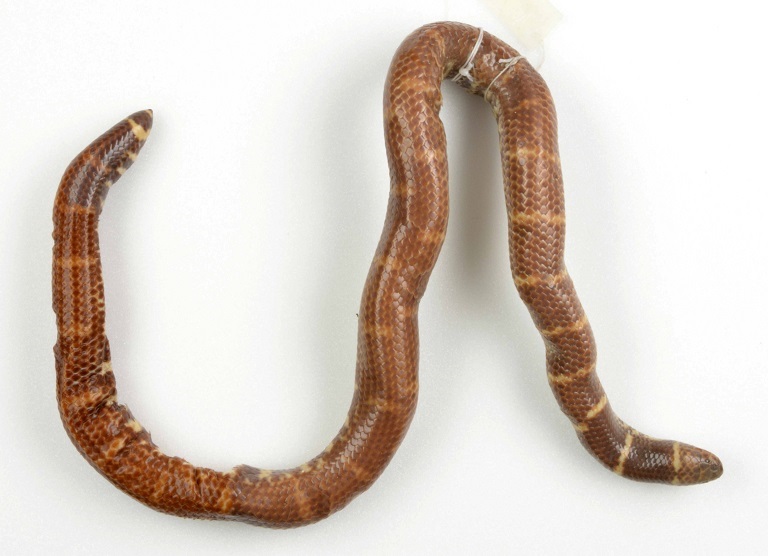
French surgeon-naturalist Joseph Eydoux collected a strikingly coloured red-tailed pipe snake from Singapore in 1830. At almost two centuries old, it is the oldest vertebrate specimen from Singapore that can still be found at MNHN.
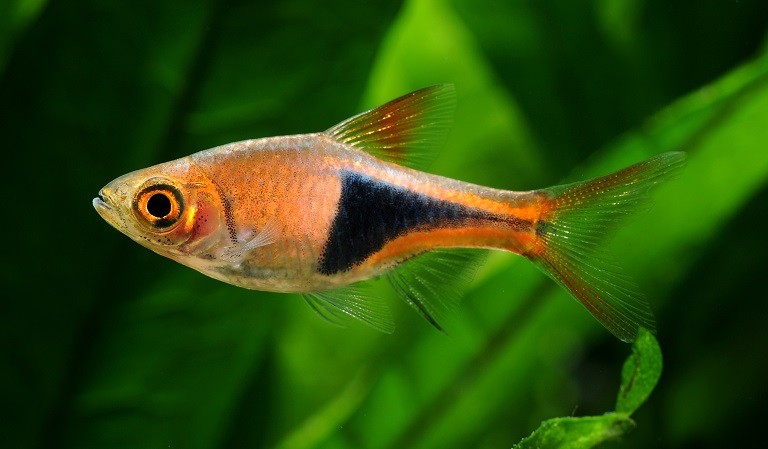
Other choice tidbits are the travels of the harlequin rasbora (often dubbed the “Stamp Fish” after being featured on a 1962 Singapore postage stamp) between Paris and Singapore, in which two aquarists play a leading role; as well as a possible first record of the unlikely-looking large frogmouth (pictured below) in 19th-century Singapore. Read the book for more!

Keen readers would notice that, due to the similar focus on the last two centuries, the events in ‘Voyageurs, Explorateurs et Scientifiques’ take place in parallel to those of our recently launched e-book, ‘200: Points in Singapore’s Natural History’. Some stories here even expand on the brief snapshots of history presented in ‘200’. These intersection points are worth exploring at leisure.
The various chapters of ‘Voyageurs, Explorateurs et Scientifiques’ were penned, individually or collaboratively, by 18 authors from France and Singapore. Their stories cross-refer and connect, building a rich narrative of French contribution to Singapore’s natural heritage, and setting the stage for the writing of future partnerships, biodiversity expeditions, research, collegiality and joint impetus towards the advancement of science.
The concluding article declares, “What does the future bode? We do not know. But neither Bouchet nor Ng [senior staff at MNHN and LKCNHM, respectively] are too worried. Coming after them are a new generation of confident young scientists who will write a new chapter. These are young men and women who have worked together for many years, know each other and understand how science works. And should work. The French-Singapore Connection, troisième partie, will take place.”
The book is a collaboration between LKCNHM and MNHN. It is generously sponsored by the Total Foundation with the support of the Singapore Bicentennial and the Embassy of France in Singapore.